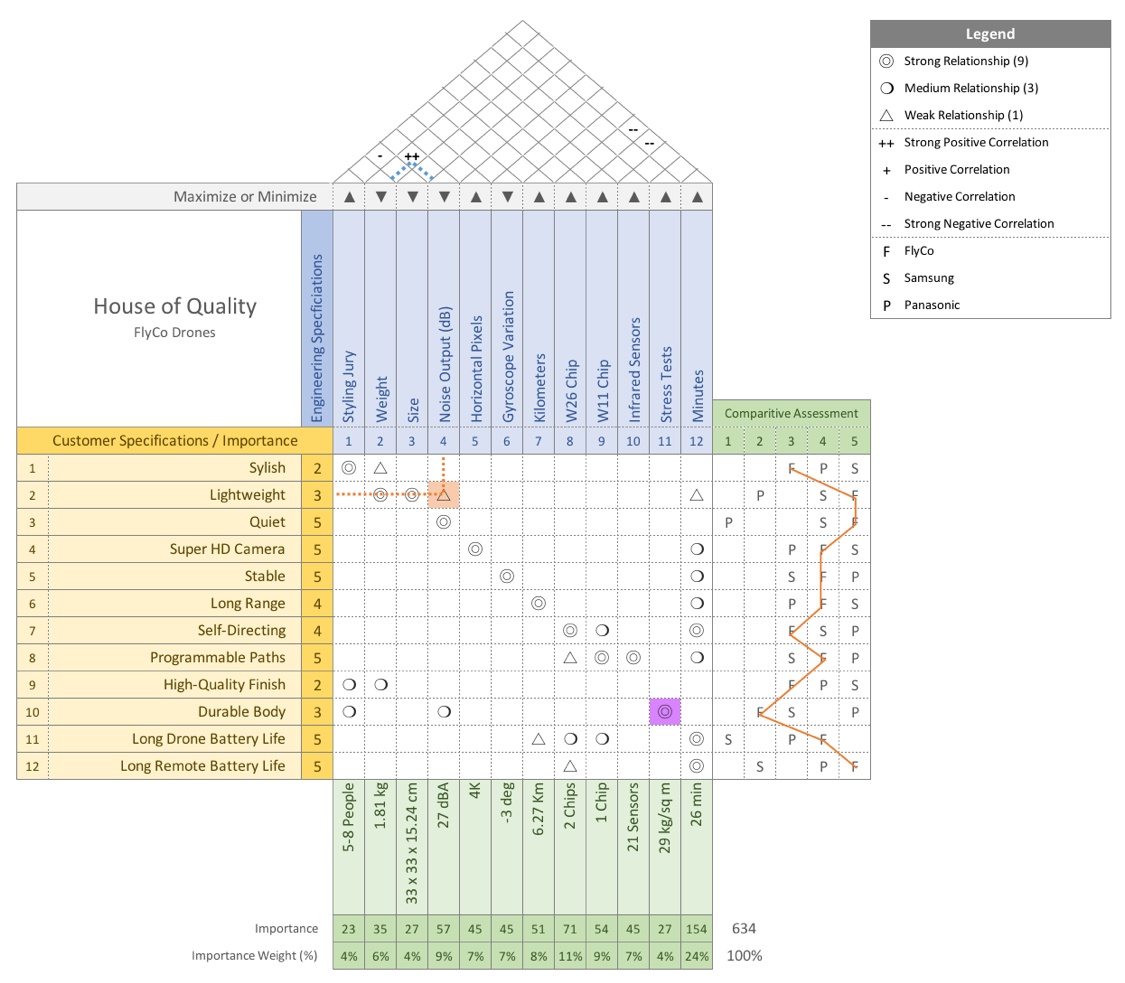Quality function deployment qfd is a method developed in japan beginning in 1966 to help transform the voice of the customer into engineering characteristics for a product.
House of quality roof represents.
The house of quality is a voice of customer analysis tool and a key component of the quality functional deployment technique.
Yoji akao the original developer described qfd as a method to transform qualitative user demands into quantitative parameters to deploy the functions forming quality and to deploy methods for achieving the design.
The roof of the house.
It is a process of listening.
The house of quality hoq is defined as a product planning matrix that is built to show how customer requirements relate directly to the ways and methods companies can use to achieve those requirements.
The house of quality is used mainly in the product planning and design phase and consists of a correlation matrix that is usually roof shaped and is found at the top of the main part of the matrix.
It is a tool to translate what the customer wants into products or services that meet the customer wants in terms of engineering design values by way of creating a relationship.
The central part of the house of quality is a table which columns correspond to the product technical characteristics and the rows to the consumer ones.
This represents quality monitoring.
House of quality diagrams use a design that resembles the outline of a house and can be created using technical and competitive benchmarking data.
At the table cells are contained the levels of dependency.
It starts with the voice of the customer.
House of quality refers to a well known process for product development that is inspired by customer desires for product or process development and anchored by the capabilities and resources of the organization seeking to meet those desires.




























